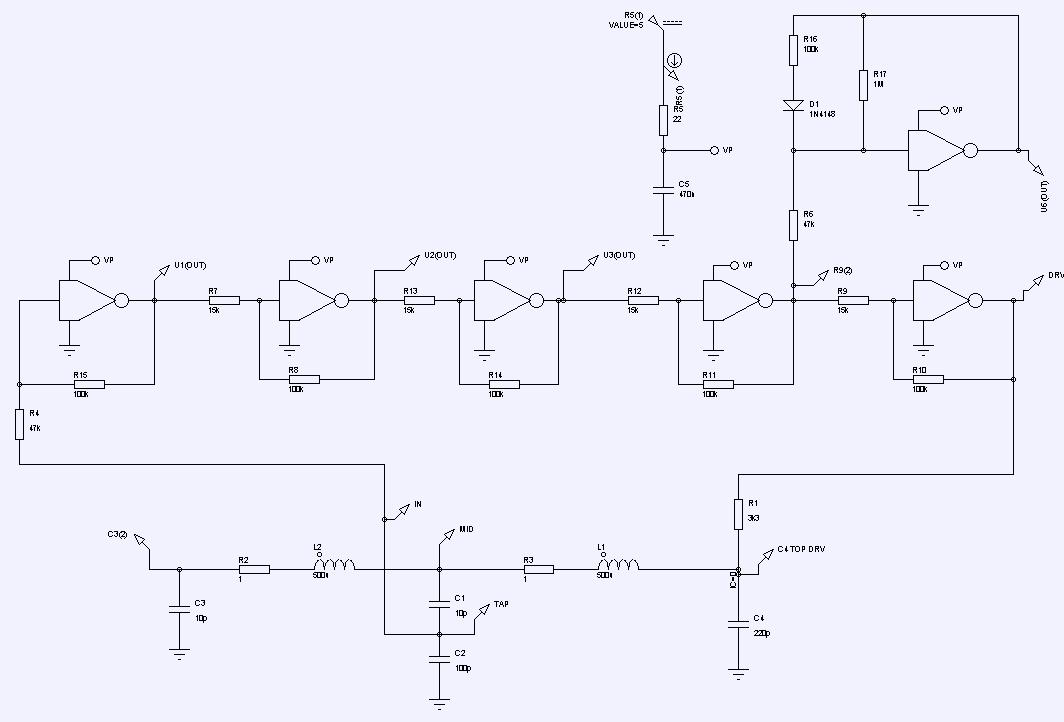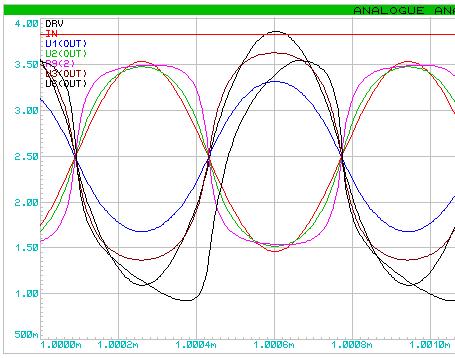"The LVC1404 is made exactly for this" - Dewster
Yes, ive looked at that part before.. It was you who got me looking at CMOS for analogue again, after I had kind of moved to 'standard' linear years ago.. and I must admit ive really fallen back in love with unbuffered CMOS! ;-)
Im not sure about the LVC1404 for the oscillators I want to build - for one thing, its SMD only - then its 3 times the price of an HCU04 (the cost of extra PCB real-estate is offset by the cost of placing a damn SMD - or at least it is for me)..
But the thing that puts me off it more than anything else is that I think the inverters are buffered..
Messing about with 6 UB inverters all operating in their linear zone to some degree, 5 in series to operate as per your "opamp" and one as a seperate 1/3 gain inverting buffer on the input sine, I get a wonderful collection of tappable low-Z waveforms ranging from sine to soft square..
I can add local input resistors and -ve feedback to any of these inverters to spread the effect (distortion) as I choose, provided the overall gain of the 5 is high enough.. Ive been playing with this kind of stuff for a while now as independent "pre-mixer-processing" - but actually, in my case, if I can incorporate this "processing" in the oscillator itself, I would be simplifying the design and reducing complexity - and I am reasonably sure that I can do this on your oscillator without affecting stability in any way.
This is where I am "deviating" and going off-topic as my main interest isnt digital .. I accept that from a digital perspective, the LVC1404 may be a better choice.. But even here I am not 100% sure.. I just have this "feeling" that your "opamp" with its linear operation, when implemented using unbuffered CMOS rather than "hard switching" buffered devices operating in "logic" mode, will be better and more stable..
But its only a feeling - could be utter BS - and (apart from switching transients and possible threshold noise, which again could be BS) I cannot explain or justify this "feeling".
Fred.
Some pictures just to show the sort of ideas (Simulations only - Dont try to build!)

Waveforms available (all buffered, Low Z) include sine, extra odd harmonics (square shaping) Square, extra even harmonics (ramp shaping) - all sorts of simple mixes available:

Without the diode stage, all the waveforms are completely aligned and 'smooth', there are no sharp edges, no current spikes containing excessive harmonics - IMO this points to extremely stable oscillator operation (I am referring to Dewsters original oscillator / + the first CMOS version shown thereof)
The above schematic seperates the gain stages allowing each to be set to taste - this is NOT needed unless you want to use these stages for analogue purposes - For digital operation there is no advantage in using the above schematic..

